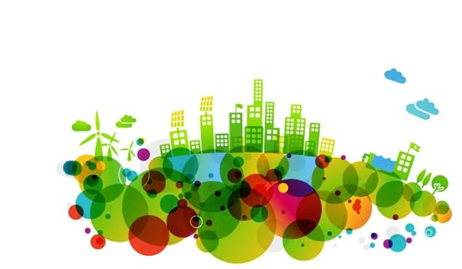Budget 2023: Environment
Context: India is moving forward firmly for the ‘panchamrit’ and net-zero carbon emission by 2070 to usher in green industrial and economic transition. This Budget builds on our focus on green growth. The Budget provides 35,000 crores for priority capital investments towards energy transition and net zero objectives.
Green Credit Programme
- A Green Credit Programme will be notified under the Environment (Protection) Act for encouraging behavioural change
- This will incentivize environmentally sustainable and responsive actions by companies, individuals and local bodies, and help mobilize additional resources for such activities.
Green Hydrogen Mission
- The recently launched National Green Hydrogen Mission, with an outlay of 19,700 crores, will facilitate transition of the economy to low carbon intensity, reduce dependence on fossil fuel imports, and make the country assume technology and market leadership in the sunrise sector.
- The government’s target is to reach an annual production of 5 MMT by 2030.
PM-PRANAM
- The PM Programme for Restoration, Awareness, Nourishment and Amelioration of Mother Earth will be launched to incentivize States and Union Territories to promote alternative fertilizers and balanced use of chemical fertilizers.
Bhartiya Prakritik Kheti Bio-Input Resource Centres
- Over the next 3 years, the government will facilitate 1 crore farmers to adopt natural farming.
- For this, 10,000 Bio-Input Resource Centres will be set-up, creating a national-level distributed micro-fertilizer and pesticide manufacturing network.
MISHTI
- Building on India’s success in afforestation, ‘Mangrove Initiative for Shoreline Habitats & Tangible Incomes called MISHTI, will be taken up for mangrove plantation along the coastline and on salt pan lands, wherever feasible, through convergence between MGNREGS, CAMPA Fund and other sources.
- Mangroves have been the focus of conservationists for years and it is difficult to overstate their importance in the global climate context.
- Mangrove forests — consisting of trees and shrubs that live in intertidal water in coastal areas — host diverse marine life.
- They also support a rich food web, with molluscs and algae-filled substrate acting as a breeding ground for small fish, mud crabs and shrimps, thus providing a livelihood to local artisanal fishers.
- Equally importantly, they act as effective carbon stores, holding up to four times the amount of carbon as other forested ecosystems.
- Mangrove forests capture vast amounts of carbon dioxide from the atmosphere and their preservation can both aid in removal of carbon from the atmosphere and prevent the release of the same upon their destruction.
Amrit Dharohar
- Wetlands are vital ecosystems which sustain biological diversity. Local communities have always been at the forefront of conservation efforts.
- The government will promote their unique conservation values through Amrit Dharohar, a scheme that will be implemented over the next three years to encourage optimal use of wetlands, and enhance biodiversity, carbon stock, eco-tourism opportunities and income generation for local communities.
Renewable Energy Evacuation
- The Inter-state transmission system for evacuation and grid integration of 13 GW renewable energy from Ladakh will be constructed with investment of 20,700 crore including central support of 8,300 crore.
Energy Storage Projects
- To steer the economy on the sustainable development path, Battery Energy Storage Systems with capacity of 4,000 MWH will be supported with Viability Gap Funding
| Practice Question
|





